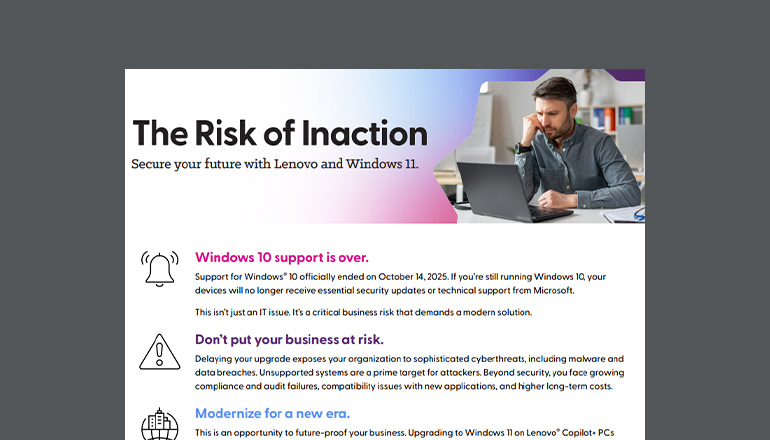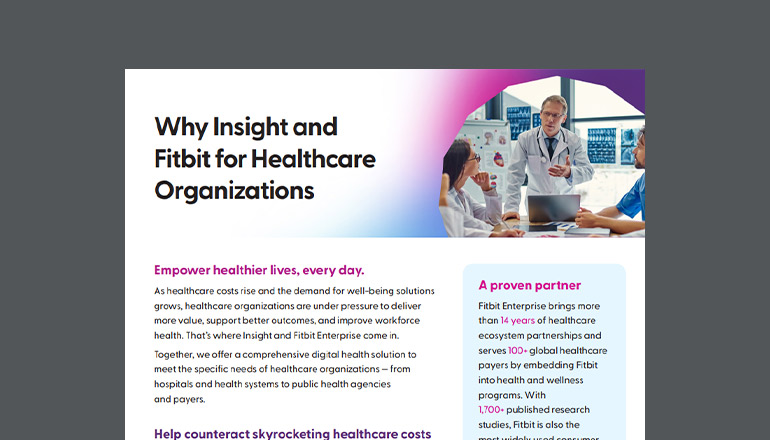Article Calculating ROI on Technology for Business: 4 Factors to Consider
All businesses today are tasked with managing large data workloads within budget and time constraints. New devices can help reduce these challenges, but many companies are hesitant to upgrade because they don't accurately calculate the technology ROI.
By Isabel Ticlo / 10 May 2018 / Topics: Devices Mobility Modern workplace Cybersecurity

Although some businesses may be put off by the upfront procurement costs associated with a device refresh, other factors contribute to the overall Return on Investment (ROI). Let’s look at four of these factors for accurately calculating ROI:
1. Outdated devices
U.K.-based publication Real Business reports office workers waste 21 days per year waiting for older devices to boot or perform tasks. As the business landscape continues to evolve at an unprecedented rate, your business doesn’t have time to wait on laptops or desktops that can’t keep up with workload demand.
Upgrading to devices equipped with the latest processors, such as 8th Generation Intel Core processors, will improve speed and agility for your workforce. Faster response times, greater flexibility and better communication lead to engaged and efficient employees — who in turn contribute to revenue growth. In addition to improving productivity, upgrading your devices will help your business entice and retain top talent.
Another point to consider with aging devices is cost. The overall cost of troubleshooting devices that no longer support big data requests will outpace the expected savings of sticking with your existing devices. Out-of-warranty support, spare parts and repair expenses can quickly add up.
2. Computer usage
Providing the necessary devices and software specific to each employee and his or her unique role can be challenging. Some employees may primarily work on mobile devices while others need desktops.
From a technology ROI perspective, your business needs to evaluate how workers will leverage devices to determine the best tools to help them be as efficient as possible. Employees who have high-performance tasks, multitask often, design most of the day or work on time-sensitive projects will benefit from a device powered by a scalable processor. For these employees, a technology upgrade may be more cost-effective to your business sooner than later.
What about a Bring Your Own Device (BYOD) policy? Businesses that encourage employees to use their own devices at work and during travel may reduce the initial expense of procurement — but will increase the costs associated with ensuring these personal devices are compatible with their systems.
3. Mobility and security
Investing in the latest mobile devices means equipping your workforce with durable and reliable tools that help drive business outcomes. Benefits include:
- Longer battery life
- Lower failure rates
- Decreased support costs
- Improved communication
- Greater networking capabilities
Although the anytime, anywhere work mentality is more expected than optional these days, greater mobility does cause security concerns. Aging devices may not be compatible with the latest security solutions you need for daily operations — creating long-term risks and expenses.
According to CSO, cybercrime damages are expected to reach $6 trillion worldwide by 2021. Investing in devices capable of supporting security solutions to protect your data is a small price to pay compared to what you would lose from a security breach.
Let’s jump back to the Intel Core processor example one more time. New devices with Intel 8th Generation processors provide one-time password credential protection, cryptopraphic protocols and hardware-based integrity protection to prevent unauthorized access. This is just one example of how a device with optimized security features can help your teams work more confidently — and give you peace of mind.
4. Device management
IT decision-makers must balance budget and employee needs when considering a technology upgrade — and would benefit from looking beyond initial investment costs when calculating the ROI of such a move.
A factor not often considered is device management and support. If you’re worried about budgeting, establishing a management model that ensures your devices are always up-to-date, secure and compliant with business standards will reduce costs associated with lifecycle management.
It’s like maintaining a car. You get your car’s oil changed and tires rotated regularly to help it not only last longer, but also sustain quality performance. When the time comes and you no longer feel safe driving an older model, you buy a new one.
With your workforce, you’ll see greater results if you provide proper maintenance and support for your devices — and procure new technology when the aging ones can no longer keep up with your needs.
Device refreshes may seem expensive upfront. But in reality, they’ll help you lower the cost of maintaining outdated equipment, spend less time waiting for applications to run, improve mobile productivity and enhance end-user experiences for a greater competitive edge in the long run.
How does the Technology ROI look now?
Include important stakeholders across the organization while you consider these four technology ROI factors. These conversations about outdated devices, computer usage, mobility and security and device management should include IT, end-users and executives.
Once everyone’s concerns and thoughts have been heard, you’ll be ready to proceed with a clear path forward that ensures the technology ROI aligns with short- and long-term business objectives. Only then will your organization know it’s making a wise IT procurement decision.







